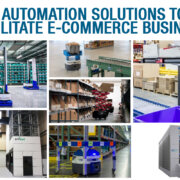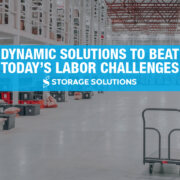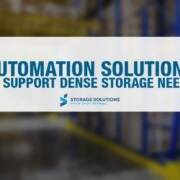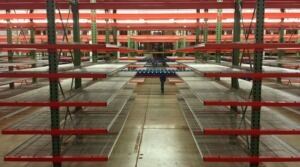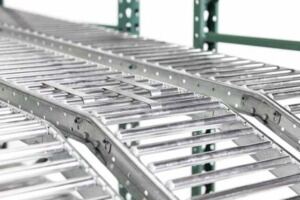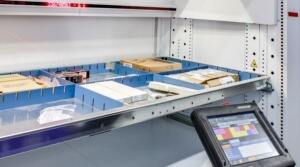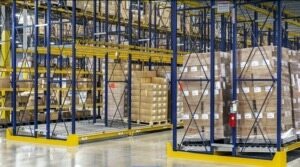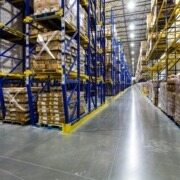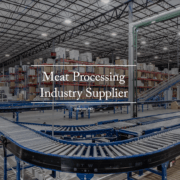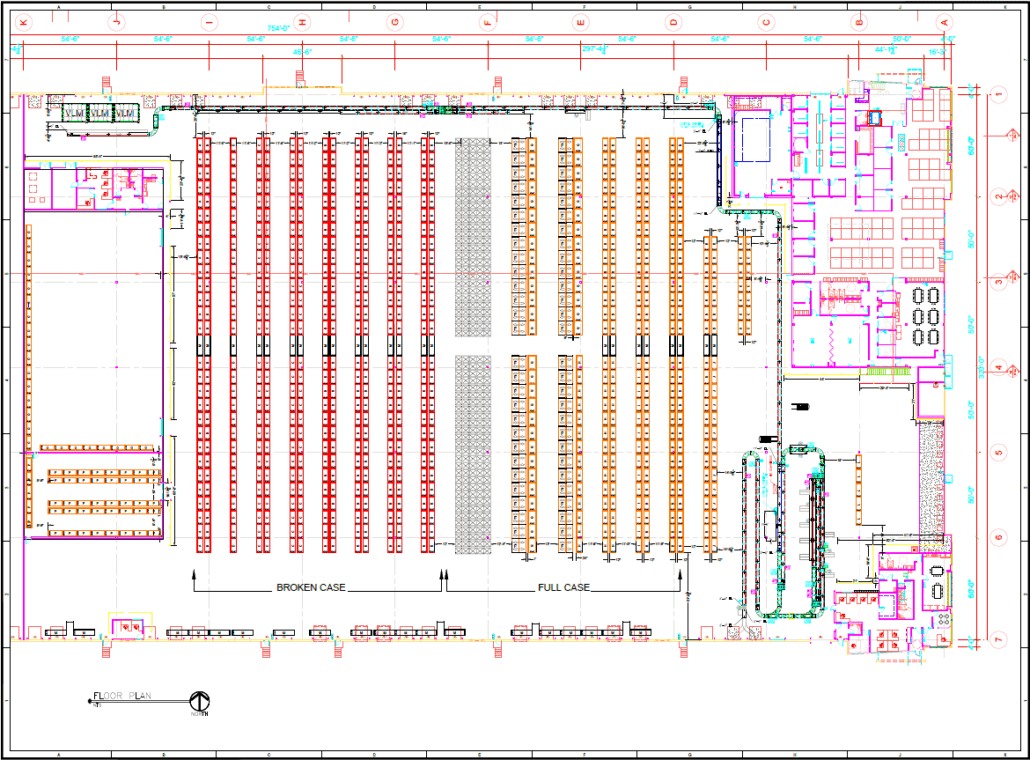There is a rapidly growing market for interest in automation solutions, especially in response to the COVID-19 crisis that has reshaped supply chains globally.
Before the crisis began, businesses of all types were slowly shifting to support e-commerce. However, when the pandemic hit, that shift suddenly forced those interested in these solutions to re-evaluate if automation was required to meet customer demand. With the recent acceleration of e-commerce demand, many fulfillment centers need to incorporate automation to a higher degree.
To meet customer demand – where the time between order and delivery expectation is shorter than any time in history – warehouses need to change. Warehouses that are not fully prepared for this rapid rise of e-commerce often rely on an excessive amount of labor (including additional overtime), missing ship dates, and do not meet customer expectations on order accuracy or fulfillment times, all while confronting an ever-increasing volume of SKUs.
The pain points are all building up for those who have not yet adjusted. In those cases, how does one respond?
Some businesses start from scratch by building new facilities, while others are looking to adjust by retrofitting under their current footprint. These companies are looking to increase storage density, reduce time and costs, and achieve higher throughput capabilities by introducing automation into their processes.
Several solutions help warehouses and distribution centers stay competitive and thrive in today’s changing world. Below, we have highlighted seven automation solutions we have seen be useful in these efforts, no matter what level of automation your facility currently has implemented:
Solution 1: Goods-to-Person Picking with HAI Robotics
 HAI Robotics is an intelligent, efficient, and flexible automation solution that utilizes a combination of HAIPICK robots, customizable storage units, software, and workstations to create a robotic goods-to-person picking workflow in a warehouse setting. These robots can handle up to eight cases simultaneously and reach heights up to 33 feet, increasing operational efficiency by up to 4x while also increasing storage density by up to 130%.
HAI Robotics is an intelligent, efficient, and flexible automation solution that utilizes a combination of HAIPICK robots, customizable storage units, software, and workstations to create a robotic goods-to-person picking workflow in a warehouse setting. These robots can handle up to eight cases simultaneously and reach heights up to 33 feet, increasing operational efficiency by up to 4x while also increasing storage density by up to 130%.
This solution replaces the repetitive, time-consuming costs of manual storage and handling and introduces a goods-to-person technology that can drastically improve fulfillment efforts.
Solution 2: Goods-to-Person Tote Handling AS/RS with Opex Perfect Pick
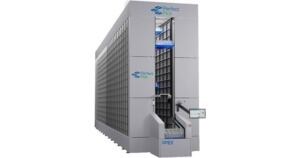 High-speed AS/RS tote handling solutions offer scalable goods-to-person picking that improves the speed with which orders are picked, increases order accuracy, and reduces labor costs related to the picking process. It is a low-risk solution for those looking to introduce automated solutions into their operations. An additional benefit of this solution is that an operator can customize either the software or the system quickly if needed.
High-speed AS/RS tote handling solutions offer scalable goods-to-person picking that improves the speed with which orders are picked, increases order accuracy, and reduces labor costs related to the picking process. It is a low-risk solution for those looking to introduce automated solutions into their operations. An additional benefit of this solution is that an operator can customize either the software or the system quickly if needed.
These systems offer high-density storage both vertically and horizontally within the system with robots that deliver products to a packing station or workstation for further fulfillment. It utilizes put-to-light technology that offers a high degree of accuracy, even with high volumes of order picking.
Solution 3: Autonomous Mobile Robots (AMRs)
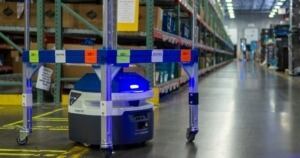 AMRs offer a wide variety of benefits, including facilitating complex fulfillment, zone picking, each picking, case picking, maximizes labor, reduces labor costs, and can be designed to be scalable, flexible, and adaptable to nearly any fulfillment process. Because they do not require massive investment or even a WMS, on-demand automation solutions like AMRs are becoming adopted widely, especially for those looking to make low-risk introductions into automation.
AMRs offer a wide variety of benefits, including facilitating complex fulfillment, zone picking, each picking, case picking, maximizes labor, reduces labor costs, and can be designed to be scalable, flexible, and adaptable to nearly any fulfillment process. Because they do not require massive investment or even a WMS, on-demand automation solutions like AMRs are becoming adopted widely, especially for those looking to make low-risk introductions into automation.
Solution 4: Put to Light Tables/Workstations
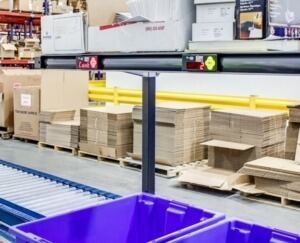 Put-to-Light systems are an automated sortation method to break down larger product quantities into smaller individual orders. Known as the “scan and sort method,” this order fulfillment method takes items that are usually batch picked beforehand and transports them to the put station. The operator will scan a bar code on individual items, and the lights will illuminate with any customer order including that product. This technology solution will increase productivity as it reduces the time associated with searching for the put location. By the time the operator is done, the next product is already waiting, meaning it is a nonstop picking environment where workers are never waiting on automation.
Put-to-Light systems are an automated sortation method to break down larger product quantities into smaller individual orders. Known as the “scan and sort method,” this order fulfillment method takes items that are usually batch picked beforehand and transports them to the put station. The operator will scan a bar code on individual items, and the lights will illuminate with any customer order including that product. This technology solution will increase productivity as it reduces the time associated with searching for the put location. By the time the operator is done, the next product is already waiting, meaning it is a nonstop picking environment where workers are never waiting on automation.
Put-to-Light offers the same hardware devices and software as pick to light, meaning you can utilize both systems on one platform. This process will be beneficial when it comes to training new employees to use this technology solution. This system’s primary goal is to give you the ability to pack and ship more orders in less time while reducing errors.
Solution 5: Mixed Use of AMRs, Pick Modules, and Conveyors
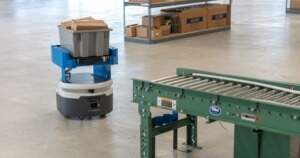 We’ve touched on the integration of AMRs in conjunction with pick modules in addition to (or in place of) conveyors here. In short, by using this solution, you are shifting the work of your labor force to more valuable tasks. Like many automated solutions, it lessens the pick process’s length and gives you a flexible, scalable solution to adjust as e-commerce continues to grow. Click here to learn more about this solution.
We’ve touched on the integration of AMRs in conjunction with pick modules in addition to (or in place of) conveyors here. In short, by using this solution, you are shifting the work of your labor force to more valuable tasks. Like many automated solutions, it lessens the pick process’s length and gives you a flexible, scalable solution to adjust as e-commerce continues to grow. Click here to learn more about this solution.
Solution 6: Introduce Automation without Massive Infrastructure with inVia Robotics
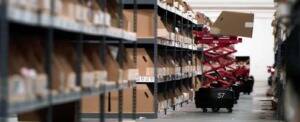 inVia Robotics offers a “crawl-walk-run” approach to introducing automation with their PickMate, Picker Robots, and PickerWall solutions. Users can integrate robotics at your scale, ultimately improving productivity up to 10x while seeing a return on investment on day one of implementation.
inVia Robotics offers a “crawl-walk-run” approach to introducing automation with their PickMate, Picker Robots, and PickerWall solutions. Users can integrate robotics at your scale, ultimately improving productivity up to 10x while seeing a return on investment on day one of implementation.
inVia is the only technology that can create a goods-to-person picking environment out of an existing pick module while not requiring massive infrastructure changes within your facility.
Their unique robotics-as-a-service (RaaS) and software-as-a-service (SaaS) subscription models offer an ideal place to start automation because the subscription model removes the massive capital expenditure from the equation
Which is Right for You?
Which is the right solution for you? Will you need a WES/WMS system? Do you need a partner to help you consider using an engineered solution in the future?
There are several factors distribution centers need to consider, not only to meet today’s demand but also to facilitate growth and adaptability for future unforeseen changes in fulfillment expectations.
We have the design and expertise to partner with you through the decision-making and implementation processes. Give us a call today!

